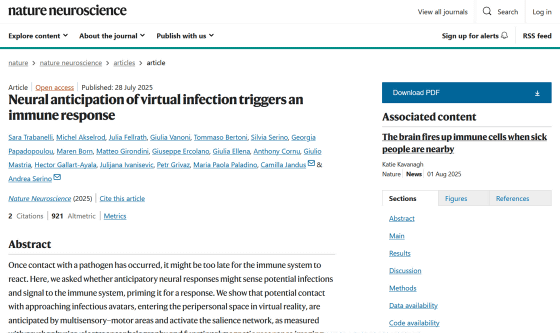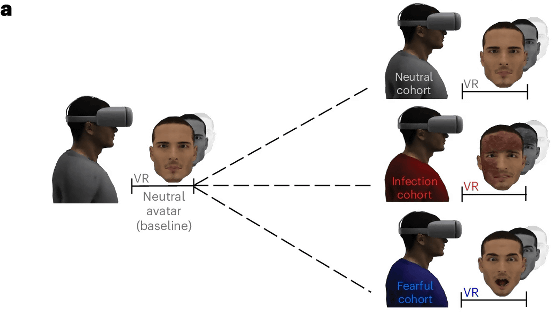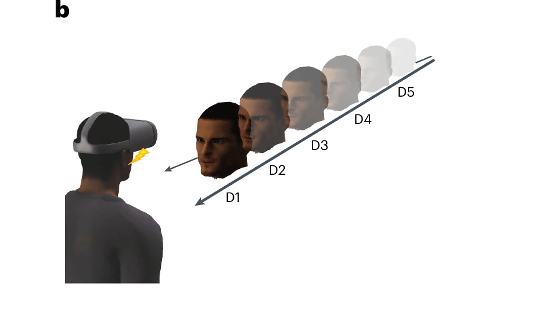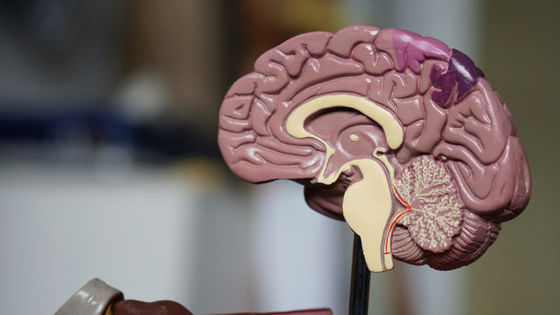Research results show that simply seeing a sick person activates the immune system

The human immune system plays a key role in protecting the body from pathogens, and new experiments by Swiss researchers have shown that simply seeing someone sick can activate the immune system.
Neural anticipation of virtual infection triggers an immune response | Nature Neuroscience

The Mere Sight of a Sick Person Can Trigger Our Immune System : ScienceAlert
https://www.sciencealert.com/the-mere-sight-of-a-sick-person-can-trigger-our-immune-system
The human immune system is affected not only by illness but also by various everyday events. Previous research has shown that entering a haunted house , exposure to sunlight , and even hunger can all affect the immune system.
A research team from the University of Lausanne in Switzerland conducted multiple experiments using a VR headset on 248 healthy adults. The VR headset used was the Oculus Rift CV1 . The research team showed the subjects avatars with different facial features and investigated their reactions to them.
Participants were first shown a neutral avatar, and then in subsequent sessions they were assigned to three avatars: a neutral cohort, an infection cohort, or a fearful cohort.

The avatars were presented at five distances, from 'D5 (farthest)' to 'D1 (closest)'.

In each experiment, subjects were measured for brain wave patterns when viewing an avatar, blood samples were taken to test for immune responses, and participants were asked to judge whether the avatar had made contact with them.
Analysis of the subjects' blood samples showed that viewing the neutral or fearful avatars did not result in an increase in immune markers, but viewing the sick avatars did result in increased blood levels of
While blood levels of ILCs typically spike when the body is exposed to a pathogen, in this case, participants were only able to visualize the potential for infection by viewing a sick person's face as an avatar through a VR headset.
They also measured the subjects' brain waves and analyzed them with a machine learning model, revealing that the subjects' brains displayed unique patterns when they viewed the sick avatar's face, but no similar patterns were observed when they viewed the neutral or fearful avatars.
The strongest brain patterns were elicited when the sick avatar was displayed at the furthest position, D5. This suggests that the brain responds to the perception of 'impending danger' from a distance, stimulating activity in the hypothalamus and other areas to communicate with the immune system. Interestingly, some of the brain regions that were activated were the same as those activated after receiving a flu vaccine.
Furthermore, in an experiment in which participants were asked to press a button when they thought the displayed avatar had touched them, it was confirmed that participants pressed the button more quickly when the sick avatar was displayed compared to the neutral or fearful avatar.

These results suggest that seeing a sick person prepares the brain for infection. The research team believes this preparation likely evolved as a fight-or-flight response, but there is still much to be learned about how this process interacts with the perception of infection and disgust.
'These results suggest that humans respond to the threat of infection not simply through physical contact, but through an integrated nervous and immune response once the space that constitutes the boundary of body-environment interaction is breached,' the research team concluded in their paper.
Related Posts:
in Science, Free Member, Posted by log1h_ik







